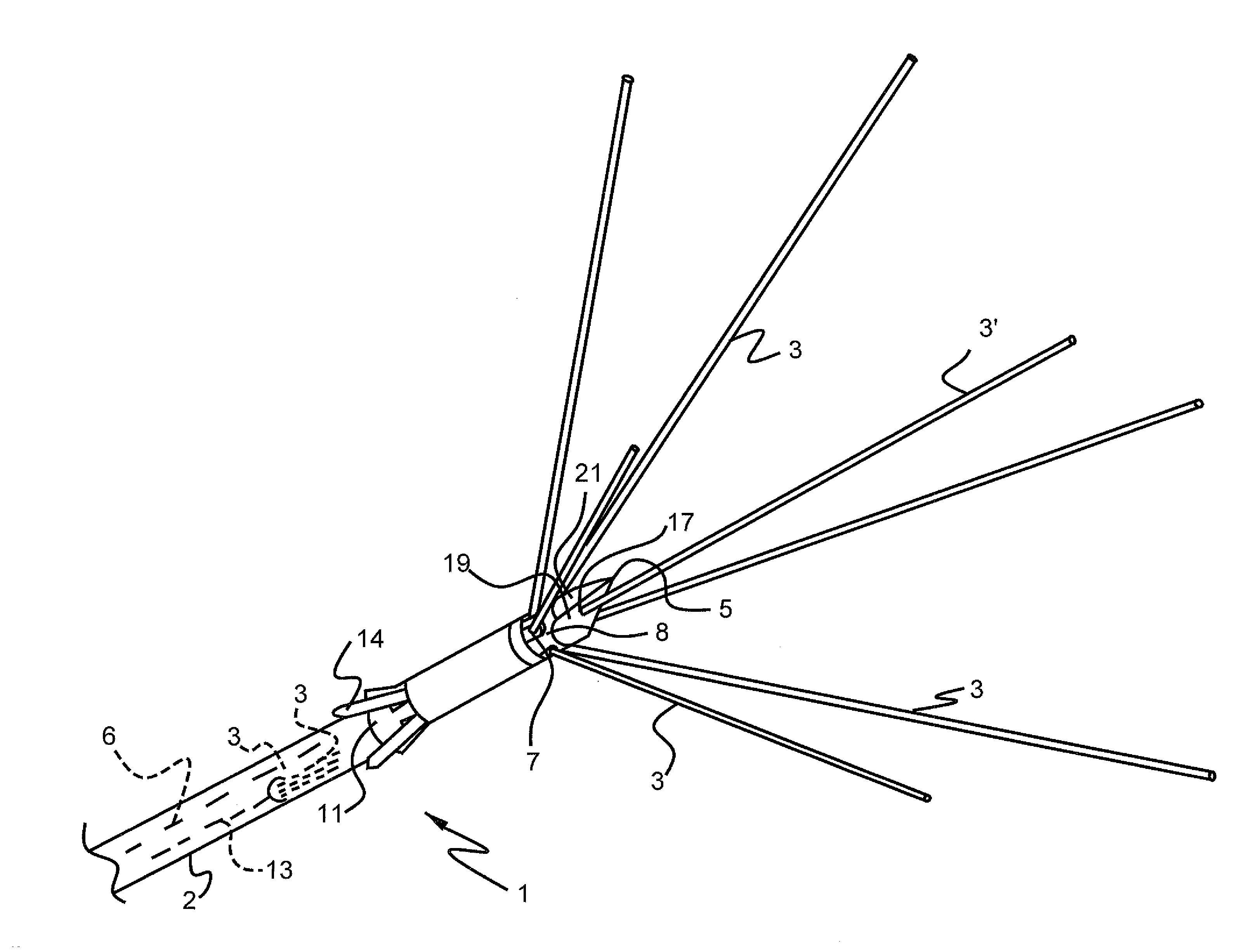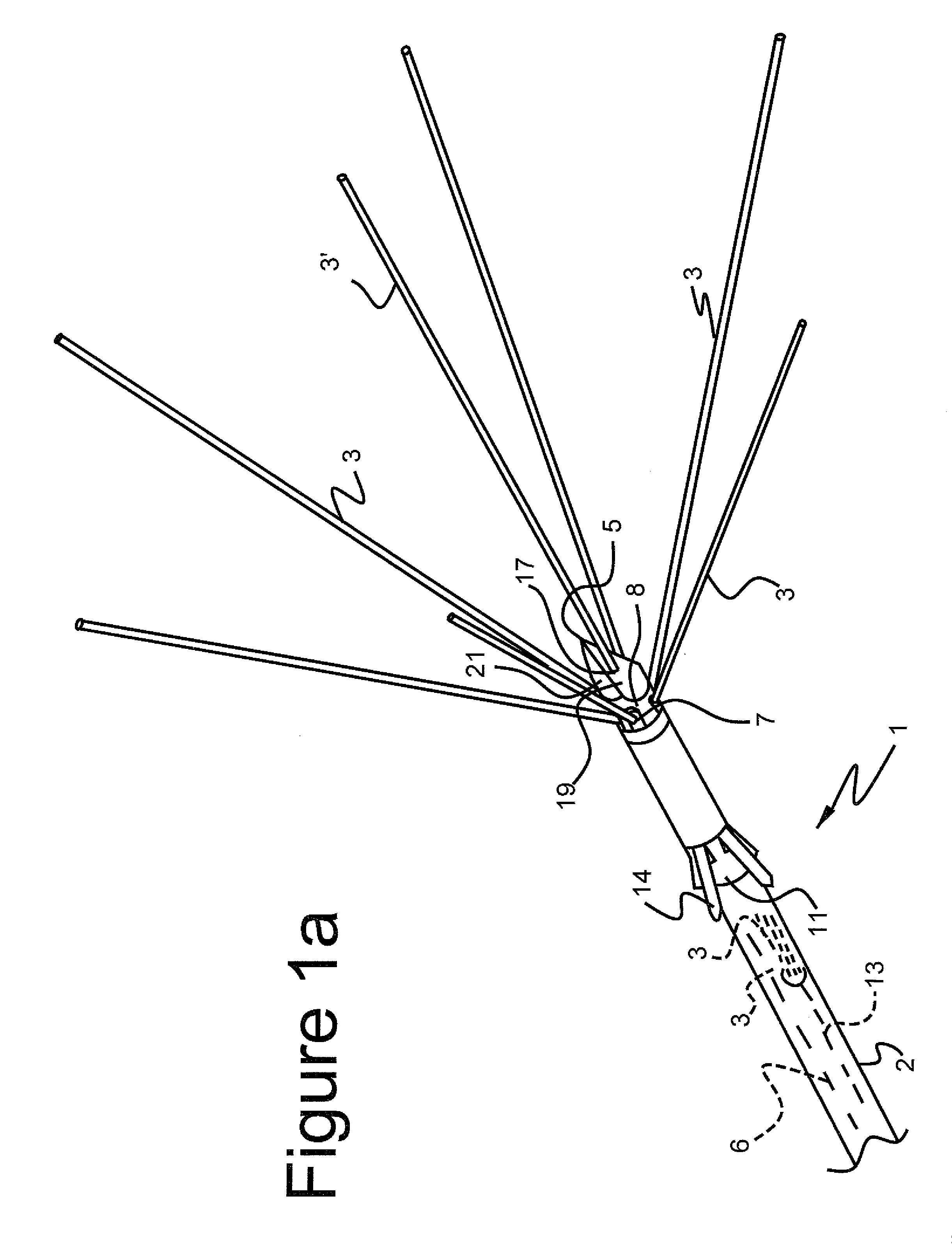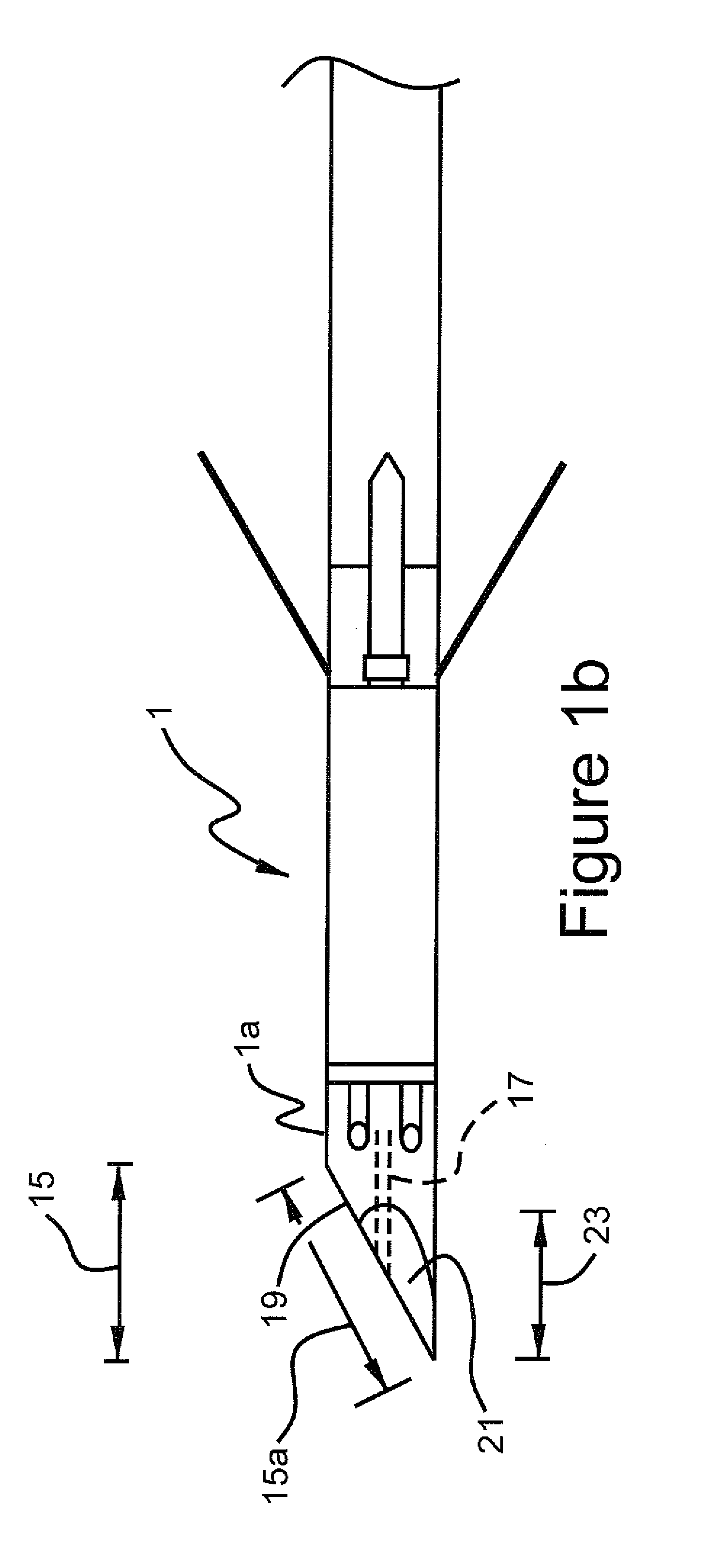Ablation method
a uterine fibroid and appendix technology, applied in the field of appendix and methods for uterine fibroid ablation, can solve the problems of long recovery time and high rate of complications
- Summary
- Abstract
- Description
- Claims
- Application Information
AI Technical Summary
Benefits of technology
Problems solved by technology
Method used
Image
Examples
example 1
As shown in FIG. 2, when trocar point 5, having the dimensions specified above, is advanced into a volume of uterine fibroid tissue and rf energy applied, an ablation zone 10 having a generally oval-shaped volume may be produced. In accordance with this example of the invention, radio frequency power at a frequency of 460 kilohertz is output into ablation instrument 1, which is deployed without externally extending stylets as illustrated in FIG. 2. The radio frequency power output to trocar point 5 is 15 watts. Radio frequency power output is produced for a period of 15 seconds. The ablation zone 10 which is produced has an axial length 12 of 1 cm and a diameter or width 14 of 0.8 cm. The tip of trocar 1a is located approximately 0.1 cm from the distal edge of ablation volume 10. It is noted that in this configuration, stylets 3 are wholly contained within cannula 2.
As illustrated in FIG. 2, it has accordingly been found that even without extending the stylets, the trocar may be use...
example 2
If a larger ablation zone is desired, in accordance with the invention, one may deploy trocar 1a with trocar point 5, and having the dimensions specified above, into a volume of uterine fibroid tissue, to create an ablation zone 20 having a generally global-shaped volume, as illustrated in FIG. 3. In accordance with the invention, radio frequency power at a frequency of 460 kHz is output into ablation instrument 1 and in particular trocar 1a. The radio frequency power output to trocar 1a is 15 watts. Radio frequency power output is produced for a period of 60 seconds. The ablation zone 20 which is produced has a length 22 of 1.5 cm and a width 24 of 1.2 cm. The tip 5 of trocar 1a is located approximately 0.5 cm from the distal edge of ablation volume 10. Ablation zone 20 extends 1.2 centimeters behind trocar point 5. It is noted that in this configuration, stylets 3 are still wholly contained within cannula 2.
example 3
In accordance with the invention, it is also possible to maintain the temperature surrounding ablation stylets 3 for a period of time, as opposed to applying a fixed amount of power to trocar 1a. For example, if a still a larger ablation zone is desired as compared to the ablation zone created in Example 2, in accordance with the invention, one may deploy trocar 1a, having the dimensions specified above, into a volume of uterine fibroid tissue, to create an ablation zone 30, having a generally egg-shaped volume, as illustrated in FIG. 4. In accordance with the invention, radio frequency power at a frequency of 460 kHz is output into ablation instrument 1. Stylets 3 are deployed a distance of 5 mm from the surface of trocar 1a, thus resulting in exposing 5 mm of their length to the uterine fibroid tissue to be ablated.
The radio frequency power output to stylets 3 and trocar 1a may be varied in analog fashion to maintain a temperature of 100° centigrade for a period of 60 seconds. Fee...
PUM
 Login to View More
Login to View More Abstract
Description
Claims
Application Information
 Login to View More
Login to View More - R&D
- Intellectual Property
- Life Sciences
- Materials
- Tech Scout
- Unparalleled Data Quality
- Higher Quality Content
- 60% Fewer Hallucinations
Browse by: Latest US Patents, China's latest patents, Technical Efficacy Thesaurus, Application Domain, Technology Topic, Popular Technical Reports.
© 2025 PatSnap. All rights reserved.Legal|Privacy policy|Modern Slavery Act Transparency Statement|Sitemap|About US| Contact US: help@patsnap.com



